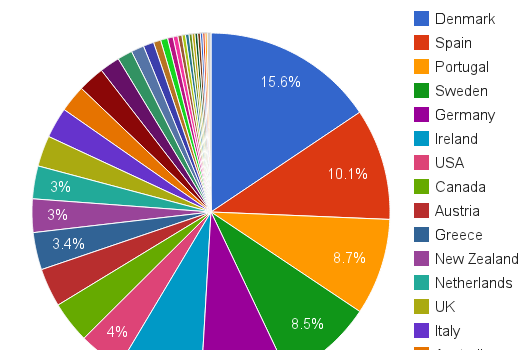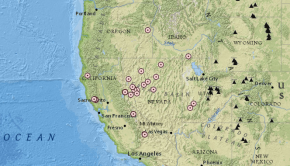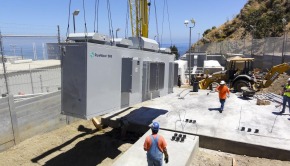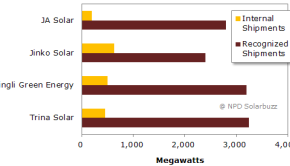Top Wind Power Countries Per Capita (CleanTechnica Exclusive)
June 20th, 2013 by Zachary Shahan
Absolute Wind Power Leaders In 2012
In absolute terms, as with basically every year, the two largest economies of the world (by far) dominated new wind power installation capacity. They also still dominate cumulative wind power capacity, accounting for nearly 50% of world wind power capacity together. Germany, the world’s 4th largest economy, came in at #3 in both those rankings. Here are GWEC’s charts on these matters:
Wind power around the world grew by a record amount in 2012, and global wind power capacity is now approaching 300 GW (300,000 MW), which we reported just this week it is expected to pass in 2013.
The regional variations are always interesting to look at. Asia’s massive rise in wind power installations dropped off a bit in 2012, but it still led the world, inching above US-led North America. Europe was not far behind those two, but was in a clear #3 spot. Compared to those giants, the growth in other regions looks minimal, but there has been a noticeable uptick in Latin America in recent years, with 2012 clearly being its best year to date.
As far as the coming years are concerned, policy uncertainty in the US, Europe, and Asia make projections very difficult, but for various policy reasons, 2013 is projected to actually see a drop in worldwide wind power growth. That is projected to pick up again in the following years, but not to an exceptional degree. Nonetheless, the growth should be fairly strong and steady. However, even two years out is very hard to predict given the great economic and political variability across the world — in this industry and others. We’ll have to wait to see, but this is GWEC’s best bet:
Check out the GWEC report for country-specific commentary, charts, and more.
Thoughts?
Keep up to date with all the hottest cleantech news by subscribing to our (free) cleantech newsletter, or keep an eye on sector-specific news by getting our (also free) solar energy newsletter, electric vehicle newsletter, or wind energy newsletter.
-
kasy
-
Bob_Wallace
-
-
http://drjagadeeshncda.blogspot.com/ Anumakonda Jagadeesh
-
Rockne O’Bannon
-
Bob_Wallace
-
Rockne O’Bannon
-
Bob_Wallace
-
Rockne O’Bannon
-
-
-
-
Rick Kargaard
-
Bob_Wallace
-
Rockne O’Bannon
-
-
-
chlobirdcity
-
Benoit
-
JamesWimberley
-
http://zacharyshahan.com/ Zachary Shahan
-
JamesWimberley
-
Bob_Wallace
-
-
-
-
Chris McLeod
-
http://zacharyshahan.com/ Zachary Shahan
-
http://zacharyshahan.com/ Zachary Shahan
-
Chris McLeod
-
http://zacharyshahan.com/ Zachary Shahan
-
-
-
-
Ross
-
Bob_Wallace
-
-
http://www.duurzamebrabanders.nl/blog Henk Daalder Windparken Wiki
-
Paul Caden
-






























